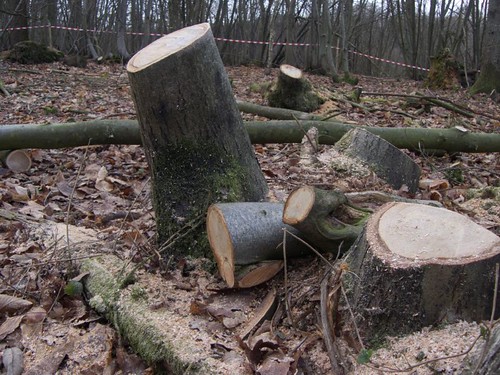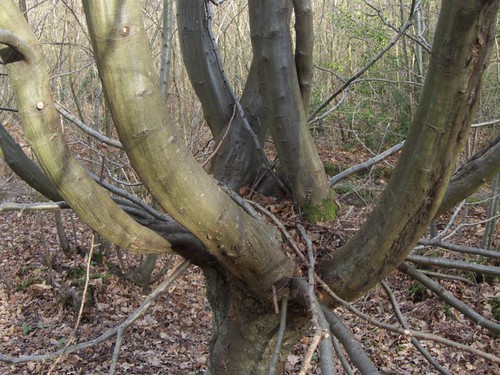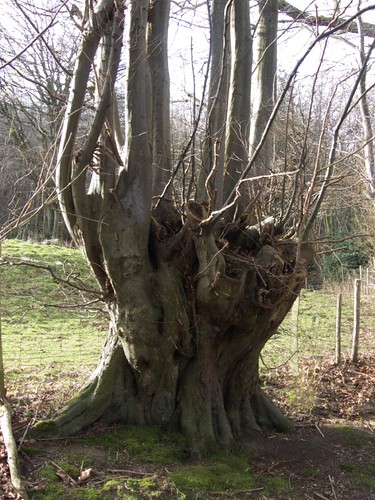OK, so everyone knows we are coppicing our wood, which basically means felling the trees and cutting the stump off close to ground level, so that new growth comes up from the base in the spring, and gives several stems per plant. However, another alternative approach is pollarding, which is basically the same as coppicing, except you leave a length of trunk. Here's one we left like that today:
So why would you do that? Well, instead of the new growth coming out at ground level, it comes out at the top of the stem, and after its grown looks like this hornbeam (which is in Sweep Wood, next door to ours: Here's a close-up:
Here's a close-up:
And if you keep doing it every time you cut it, you end up with something like this very old hornbeam pollard (again in Sweep Wood):
So what are the advantages of pollarding?
- It makes the trees look cool! :-)
- A pollarded tree can live to a great age, much longer than the same tree left to itself would.
- Because the new growth starts at some distance off the ground, it is harder for browsing animals (deer and rabbits) to damage the new shoots.
- When the older pollard stumps eventually die (while the newer ones are still alive), they can form an excellent wildlife habitat.
Traditionally, chestnut is pollarded at a low height to mark the edge of each "cant" or "coupe" that has been cut. There's several old pollards in our wood like this, but the boundaries they once marked no longer seem to be in use.
Mike

1 comment:
thanks great blog i was doing my geo homework and this worked great
Post a Comment